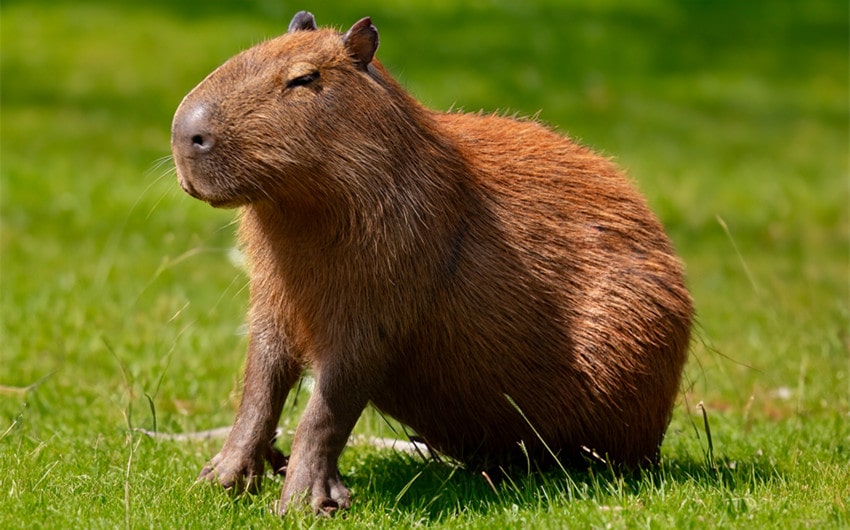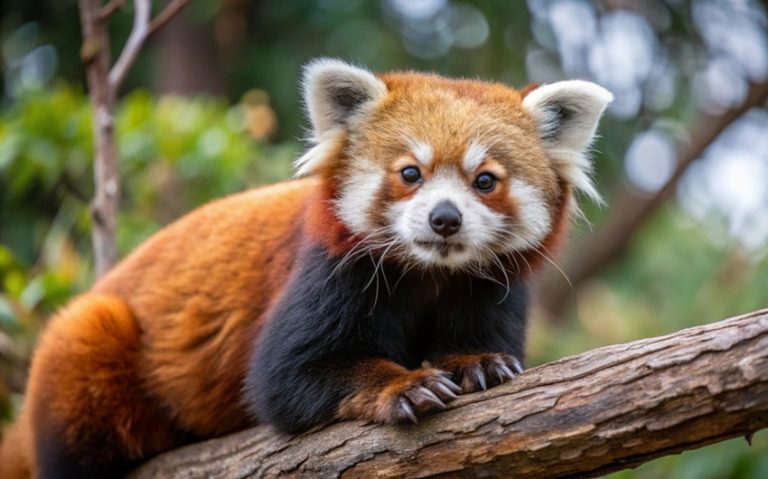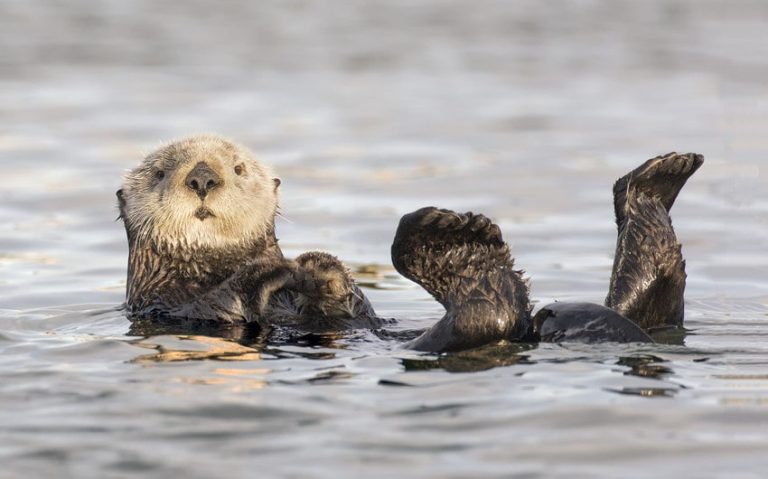Why Are Capybaras So Chill: 5 Scientific Reasons
You’ve seen the pictures—capybaras lounging in hot springs, calmly surrounded by birds, monkeys, and even predators like crocodiles. They seem totally unbothered by the chaos of the world around them. It’s no wonder the internet has crowned them the kings and queens of calm.
But beyond the memes and viral videos, many people find themselves genuinely wondering: Why are capybaras so chill? There’s actually more to their laid-back vibe than meets the eye. From biology to behavior, capybaras are naturally built for peace. Let’s dive into what makes these giant rodents the ultimate symbol of relaxation.
1. Natural Behavior and Social Structure
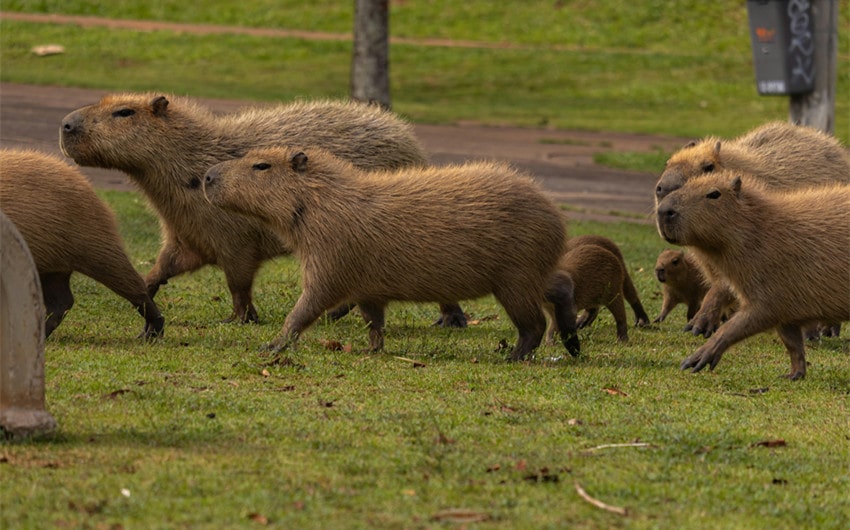
One major reason capybaras are so chill lies in their natural behavior and social lifestyle. Capybaras are highly social animals that live in structured groups, often consisting of 10 to 20 individuals, though in the wild, some herds can number up to 100 during the dry season. In these groups, harmony and cooperation are essential for survival.
Rather than establishing dominance through aggression, capybaras use subtle body language and vocalizations—including gentle purrs, chirps, and whistles—to communicate and maintain social order. Physical closeness is a major part of their bonding process. You’ll often see capybaras lying next to each other or grooming one another, reinforcing social bonds and reducing tension within the group.
Because they rely on group dynamics and mutual trust, capybaras have developed a naturally non-confrontational temperament. Fights are rare, and disputes are typically resolved with minimal stress or aggression. This peaceful social structure helps explain why they’re so tolerant of not only their fellow capybaras but also other animals, including humans.
2. Biology and Brain Chemistry
Beyond behavior, capybaras’ calmness is likely influenced by their biological and neurological makeup. Though detailed studies on capybara neurochemistry are limited, animal behaviorists suggest that their mellow demeanor could be tied to lower baseline levels of stress hormones like cortisol. Lower cortisol means they’re less reactive to stressful stimuli, allowing them to remain relaxed even in surprising or unpredictable situations.
Additionally, as prey animals, capybaras have evolved with a nervous system tuned more toward passive survival than fight-or-flight responses. In the wild, sudden aggressive movements or excessive tension can draw the attention of predators. Remaining still, calm, and unbothered can actually be a survival strategy—one that helps them blend in with their surroundings and avoid confrontation.
There may also be a genetic component at play. Unlike territorial or solitary animals, capybaras haven’t had to evolve high levels of aggression or anxiety to defend food or space. Their bodies and brains have instead adapted to a communal, low-conflict lifestyle. The result? A species that’s hardwired to be as chill as they look.
3. Environmental Factors
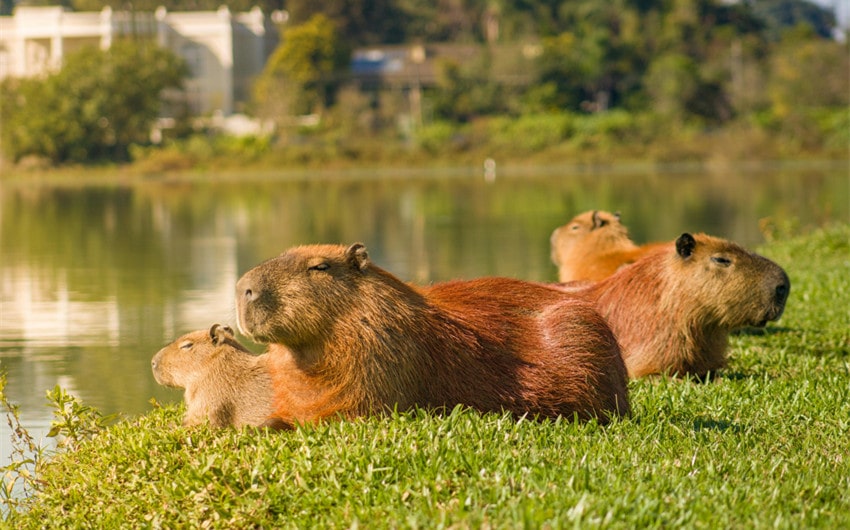
Capybaras don’t just have a relaxed personality—they live in environments that encourage that calm. Native to South America, capybaras thrive in warm, humid climates near bodies of water, such as rivers, marshes, and swamps. Their semi-aquatic lifestyle plays a huge role in their behavior and overall demeanor.
Spending so much time in and around water helps regulate their body temperature and gives them a natural escape route from predators. Water is a comfort zone for capybaras—it’s where they rest, cool off, and even sleep submerged with just their noses poking above the surface. Living in such a soothing, low-stress habitat helps keep their anxiety low and their temperament mellow.
Additionally, the regions where capybaras live are often rich in vegetation and food sources, meaning there’s little competition for resources. Unlike animals that must fight or guard their food, capybaras can graze peacefully on grasses and aquatic plants. This abundance reduces territorial instincts and aggressive behavior, contributing to their reputation as nature’s chillest herbivores.
Their calm environment, steady food supply, and love of water all reinforce a lifestyle built around ease, comfort, and low stress—exactly the kind of conditions that let their laid-back personality shine.
4. Human Interaction and Domestication
Another reason capybaras seem so chill is their extraordinary tolerance for human interaction and other animals. In captivity—whether in zoos, animal sanctuaries, or farms—capybaras are frequently seen lounging with ducks, cats, dogs, turtles, and even monkeys. Their peaceful coexistence with other species isn’t just viral video magic—it’s a real reflection of their personality.
Unlike many wild animals, capybaras show a remarkable lack of fear or aggression toward humans. They often allow petting, sitting close to people, and even being bathed or dressed up in some cases. This docile nature makes them popular in petting zoos and wildlife parks, where they are known for being friendly, approachable, and safe to interact with.
As exotic pets, capybaras are becoming increasingly sought-after (though ownership is regulated and not recommended without serious research). Their gentle, affectionate behavior makes them appealing, but it’s important to note that they still require large spaces, access to water, and the companionship of other capybaras to remain emotionally healthy. Their chill attitude doesn’t mean they’re low maintenance—it’s just part of their nature.
5. Capybaras in Pop Culture and Internet Fame

In recent years, capybaras have become unexpected internet celebrities, earning their place in memes, viral videos, and wholesome animal compilations. Often seen soaking in hot springs, chilling in the grass with a flock of ducks, or giving rides to monkeys and birds, capybaras have captivated the online world as the ultimate symbol of peace and patience.
Their expressions—calm, stoic, and seemingly unbothered by chaos—make them perfect for meme culture. Social media users frequently share capybara content with captions celebrating their zen-like energy, dubbing them the “chillest animals alive.” This portrayal isn’t just funny—it’s surprisingly accurate based on their biology and behavior.
Beyond memes, capybaras have also made appearances in cartoons, video games, and animated films, often portrayed as the mellow, unflappable character in a cast of more high-strung animals. Their popularity has even inspired plush toys, capybara-themed music remixes, and animated “vibe videos,” further solidifying their reputation as the mascot of tranquility.
